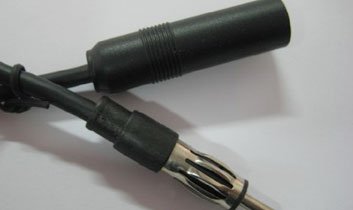Installing an In Line Adapter
An in line adapter is a device that can be used to connect two different devices that are incompatible with each other, or two cables with connector ends that do not fit. These adapters allow the flow of power or signal through the devices or cables to continue, without any change. An in line adapter merely functions to enhance the attributes of a particular system or device.
In Line Adapter Description
Before installing an in line adapter, it is important to first understand what the device looks like and how it functions. These adapters are usually small in size. In fact, they are small enough to fit in the palm of a hand. They can be carried around with ease in a person's pocket or bag. In line adapters are also built to be light in weight to make it easier to carry them while traveling.
Most in line adapters are shaped like boxes, either square or rectangular. Sometimes they may be cylindrical if they need to be used on cables such as coaxial cables. They are mostly made of high quality, durable plastic. However, if the adapter needs to be used under harsh conditions such as high temperatures, materials such as aluminum are used.
In line adapters usually come with connecters on two ends that could be either male or female, depending on what devices they are meant to connect. For power in line adapters, plugs that are compatible with power sockets of multiple countries would be provided.
Installing an In Line Adapter
Installing an in line adapter is not a very tough job. For the most part, it just involves plugging in devices to both ends of the adapter. USB devices, power chords, water hoses, and more can be attached tightly to the ends of an in line adapter. However, some devices may require a more firm connection. In these cases, the device would need to be screwed in to the adapter. Let's take a look at a few examples of installing an in line adapter:
- In line adapter DSL filter: These adapters come with a short cable like a tail at one end with an RJ11 connector. They need to be plugged in to the telephone wall jack outlet. The telephone instrument can then be plugged in to the other end of the adapter.
- Duplex in line adapter: This is a type of adapter that allows two devices to be connected at one of its ends. For instance, a DSL adapter that connects to the wall jack at one end, could allow more than one telephone or modem device to be connected at the other end. Again, installation of this device is very simple and just involves plugging.
- In line control adapter: This is a remote control adapter to increase the functionality of a pair of headphones. On one end it needs to be plugged in to the music source such as an iPhone and the other end connects to the headphones. It then allows to control volume, receive calls, etc., remotely.
These are some of the uses of an in line adapter. As is evident, installing an in line adapter, is usually a very simple task.

